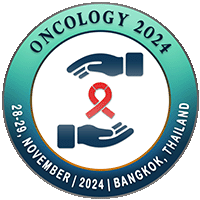
Belonenko G
Donetsk National Medical University, UkraineTitle: Diagnostic algorithm at intraductal neoplasia of the breast
Abstract
Actuality: Intraductal neoplasias (IDN) of the breast are characterized by a high (up to 30.0%) incidence of cancer and require detailed diagnosis and histopathology. In 38.0–85.0% IDN are not detected by mammography (MG), in 35.0–71.0% by ultrasound (US), in 16.3–22.7% by endoscopic mammoductoscopy (EMDS) and then the possibility of closed biopsy is limited. With an open biopsy (ductectomy), about 20.0% of IDN confirmed by ductography and / or EMDS are not detected by histopathology. The purpose of this publication was to analyze the results and prepare an algorithm for multimodal diagnosis of IDN using ductography (DG), US and EMDS.
Material and methods: Central and selective ductectomy was performed on 158 adult women with pathological nipple discharge. In 81 cases, routine marking of the milk duct with methylene blue or propylene thread was used. In 77 cases, according to the proposed algorithm (Fig. 1), our own methods were used: a - selective ductography (DG) under endoscopic control; b - stereotaxic core-needle biopsy under DG guidance; c - preoperative targeted double marking of the IDN with a metal wire under the control of US and EMDS.
Results: With routine labeling, the frequency of such “non-oncological” histopathological diagnoses as ductectasia, inflammation, fibroadenomatosis was 61.7%. With a modified approach, histopathology demonstrated multiple and solitary papillomas (51.9 and 39.0%, respectively), atypical ductal hyperplasia (6.5%), and invasive carcinoma (2.6%). This fact indicates a more adequate removal of IDNs, especially peripheral localisation, which often remain unremoved after surgery. At the same time, less traumatic selective ductectomy was performed in 87.4%, the volume of removed tissues decreased by 21.6 cm3, the frequency of postoperative complications - by 7.2%.
Conclusion: The combination of routine and modified techniques in accordance with our algorithm avoids complex, costly diagnostics and justifies open surgery when it is unavoidable.
Biography
TBA

